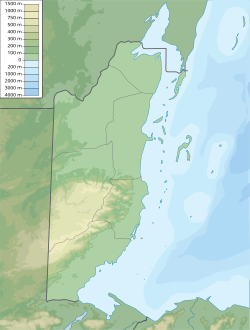Archaeology
In the early 1970s, several Mennonites from the nearby Mennonite community floated a short distance into Barton Creek Cave on oil drums. They found human bones not far from the cave entrance. On May 9, 1974, two Peace Corps Volunteers working for Belize's Dept. of Archaeology as experienced cave explorers (Barbara MacLeod and CarolJo Rushin) entered the cave accompanied by a local farmer (American expat Patrick Cartwright). The trio paddled over a mile into the cave, finding artifacts but not the human bones discovered by the Mennonites. The following day, MacLeod, Rushin and Cartwright explored two nearby caves, accompanied by three Mennonites. One cave contained Maya potsherds and artificially constructed seats or altars. The other cave contained an artificial rock pile mixed with Maya potsherds.
Extensive looting of artifacts occurred soon after the cave was first reported, but it remains an important site for archaeologists. Evidence of cave use by the Maya exists on ten ledges within the first kilometer of cave passage. Pottery sherds indicate use between the Early Classic (200 to 600 CE) to the Late Classic (600 to 900 CE) periods. The remains of at least 28 humans have been found within the cave.
This page is based on this
Wikipedia article Text is available under the
CC BY-SA 4.0 license; additional terms may apply.
Images, videos and audio are available under their respective licenses.


